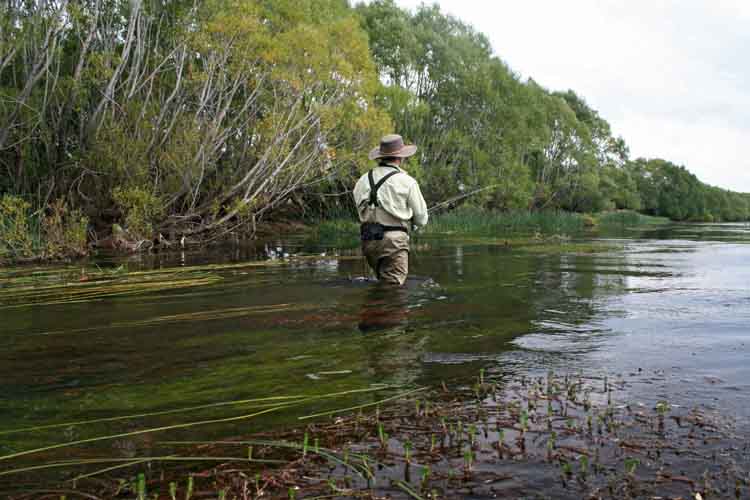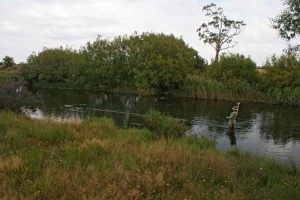
Prime spring-creek runs
Yesterday marked the first full-bore grasshopper day of the season: I was lucky to be guiding on my favourite midlands stream with two skilled anglers, who managed 50 or so smashing takes on dry flies. Half of these trout were hooked and landed, ranging from half-a-pound to a bit over two-pounds. Deep, faster flowing runnels among spring-creek weedbeds were the hotspots, and the WMD Hopper proved to be the successful go-to fly.
The success of the day came as no surprise; each day over the past fortnight has featured minor hopper fishing of sorts, but yesterday featured a full-on trout driven assault on this grass-munching food source. Our day started out with a light morning-time spinner fall, where parachute spinners undone half-a-dozen or so mooching browns. As the morning progressed and warmed, and the bankside hoppers started their screeching chatter, artificial hoppers replaced parachute flies, and the second fish to see our artificial was hooked. This continued through ’till 4.30 or so in the afternoon, when the afternoon sea-breeze took affect, and fish began to shut-down for the day. This daily rhythm is typical Tasmanian affair: a small morning rise, followed by the best fishing during the ‘gentlemen’s hours’ of 10-4, at the end of which the peak of the fishing comes to an end.
The best things in life are are seasonal, whether it’s the springtime of birth or the winter of death, or the heat of a hopper hatch or the coolness of a sea-breeze at the end of a dry fly fishing day. Perhaps it’s the impermanence of nature’s events, the ephemeral highlights, that makes fly fishing and life in general so interesting.
Hopper fishing tips: If fish consistently approach the hopper, but fail to take it, try twitching the fly with a movement of the rod tip. This often seals-the-deal, proving to much for the trout to refuse.

Hook-up on the WMD Hopper
